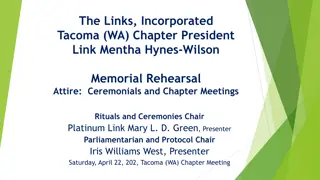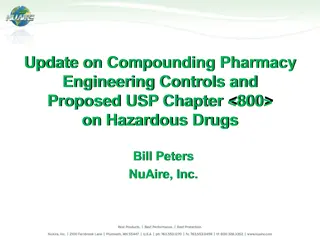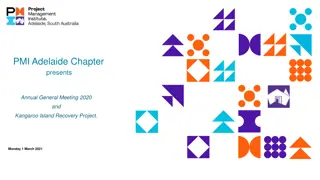
Unlocking the Power of Flexibility for Optimal Health
Discover the importance of flexibility beyond competitive sports, exploring its benefits for joint health, athletic performance, injury prevention, posture, and overall well-being. Learn about factors influencing flexibility, self-evaluation tests to improve muscle flexibility, and how to design a tailored flexibility program. Embrace dynamic and static stretching techniques for enhanced flexibility and reduced injury risks.
Download Presentation

Please find below an Image/Link to download the presentation.
The content on the website is provided AS IS for your information and personal use only. It may not be sold, licensed, or shared on other websites without obtaining consent from the author. If you encounter any issues during the download, it is possible that the publisher has removed the file from their server.
You are allowed to download the files provided on this website for personal or commercial use, subject to the condition that they are used lawfully. All files are the property of their respective owners.
The content on the website is provided AS IS for your information and personal use only. It may not be sold, licensed, or shared on other websites without obtaining consent from the author.
E N D
Presentation Transcript
Developing Flexibility Chapter 5 Isn't stretching just for competitive sports?
Flexibility The ability of a joint to move freely through its full range of motion. https://www.youtube.com/watch?v=Xh9o9 5etgYo video of abnormal flexibility Not what we is meant by full range of motion.
Factors Affecting Flexibility Anatomical (Structural) Factors Shape of bones Connective tissue ligaments & cartilage (joint capsule) (47%) Muscle (41%) Tendons (10%) Skin (2%) *As you can see the muscles are a major factor in your flexibility and you can drastically change their ability to stretch more. Ligaments and cartilage should not change in structure.
Benefits of Flexibility Healthy joints - Keeps joints lubricated. Enhanced ability to move freely and easily - enhancing athletic performance. Stretching during warm-up decreases the risk of injury. Reversal of age-related decline in flexibility. Improved posture and appearance. Helps prevent lower back problems. It feels good. 1. 2. 3. 4. 5. 6. 7.
Preventing Lower Back Pain See Figure 2 and Table 1 (pg. 114) 2. Guide to why strong and flexible muscles in the hip/lower back region will help decrease the changes of lower back pain. Preventing Poor Posture Review this section. 2. Look at Laboratory 1 to evaluate your posture. 1. 1.
Evaluating Flexibility Is not joint specific. Flexibility is muscle specific. You are trying to improve/test the flexibility in a muscle. Example; your right shoulder may have more range of motion than your left shoulder because those muscles are more flexible. Sit & Reach Test - https://www.youtube.com/watch?v=lv- _D8NnKdw Running Flexibility Test - https://www.youtube.com/watch?v=pjRmW837T h0 Shoulder Flexibility Test - https://www.youtube.com/watch?v=DUtHU3C1B sE These are just a few of the self tests that are available. 1. 2. 3.
Designing a Flexibility Program Evaluate your flexibility so you can set goals. Dynamic vs static. https://www.youtube.com/watch?v=Lt6YvDaFmPU Dynamic or Ballistic Range of motion that is achieved through moving a limb to its limits in a quick fashion. Associated with increased muscle soreness and the stretch reflex. Used more in athletic competition. Not recommended for personal fitness programs due to risk of injury. Static Range of motion that is achieved through slow controlled stretching. Most commonly used and recommended type.
PNF Stretching or PNF: Partner- Assisted Stretching https://www.youtube.com/watch?v=PhfbsLEPus0 Proprioceptive neuromuscular facilitation (PNF) uses the nervous and muscular systems to facilitate stretching. PNF utilizes the inverse stretch reflex to relax the target muscle. PNF stretch: perform a 10-30 second static stretch, then contract the muscle for 6 seconds to produce fatigue, and then relax while a partner stretches your limb for 10-30 seconds. For safety be sensitive to your partner s needs and flexibility level.
Stretch Reflex https://www.youtube.com/watch?v=Ya- 3XHBWDqs Involuntary contraction of a muscle due to rapid stretching of that muscle. So that s why my leg jerks when the Dr. taps my knee. Helps prevent muscle and tendon damage. The reason muscle stretching must last long enough for the stretch reflex to release.
Guidelines of Flexibility Development Frequency 2 to 3 days a week (up to 7 days if possible). Intensity slightly beyond the normal range of motion to the point of tension. Time 10 to 30 second static hold, 10 30 minutes each session. Repetitions at least 4 sustained stretches for each muscle group. https://www.youtube.com/watch?v=LZ32 h05edv0
Tips for Developing Flexibility Warm up before stretching After warm-up, stretch to prepare for activity Stretch for flexibility during cool-down Stop at the point of tension, not pain Stretch slowly and evenly Try to consciously relax Maintain regular breathing Don t bounce Strive for muscle balance.
Take Action Incorporate stretching before and after exercising. While studying or reading the morning paper, sit on the floor and stretch. While on the phone, stand and stretch. If you have a desk job, take a 5-minute stretch break every hour. After every hour of computer use, take a 5- minute stretch break. While watching TV, stretch during commercials.














